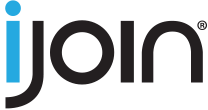By Alan Gross
Is a glass half full a good thing – or not? If we’re talking about your favorite beverage, perhaps a half full glass is a nice thing. If the glass is a measure of workplace retirement plan success, your conclusion should be significantly less rosy. While millions of people have access to a workplace retirement savings plan, the sad truth is that too many more still don’t.
The glass half full says the private system augments Social Security and personal savings and is, in fact, of service to tens of millions of people who would likely not save as much (or at all) if not for workplace 401k’s and other plans. The half empty side, however, is a slow motion disaster still unfolding unless we – all of us – act. And “act” means in two very important ways:

First, we need to radically speed up the rollout of low-cost plans that make access available to hundreds of thousands of businesses and millions more people. The retirement plan industry is taking some of its most aggressive steps ever towards this through new MEPs, PEPs, and other arrangements and by achieving cost efficiencies only the economies of scale can drive. And scale is achieved by process automation, automated enrollment, and automated advice coupled with highly cost-competitive investments. The question is, will it be enough? Will it reach the market in meaningful numbers soon enough to positively impact the financial security of the 42 million people who work for small businesses?
Second, and the other reason the glass isn’t fuller, is because access doesn’t necessarily mean success. Of those who have access and are participating, many are well behind the savings curve. Many start too late. Many are not saving enough. PWC Research found that the “median retirement account balance for 55-to-64-year-olds is $120,000. They reported “When divided over 15 years, that would generate a modest distribution of less than $1,000 per month and even less for those who outlive their life expectancies.” How you regard statistics about average balances may reflect how you view the role of Social Security and other individual savings. Regardless, there is an accompanying reality that far too many people contribute to a retirement plan via payroll without understanding how much money they will likely need in future retirement income. And despite raising their hands in survey after survey that they would appreciate professional help investing, cost-efficient, personalized “manage it for me” options are not nearly as prevalent as they need to be help more people optimize their savings potential. It’s no wonder that according to estimates, “just 36% of the US workforce thinks their retirement savings plan is on track.”
“At the end of the day,” our retirement system’s success will be judged not by marketing, sales, revenue, or profit metrics. Rather it will simply be a measure of how many people we helped succeed. That’s outcomes in the form of real retirement income. We have the technologies and the intelligence to make it happen. It’s a big challenge and it calls for big solutions. And there’s precious little time to get it right.
